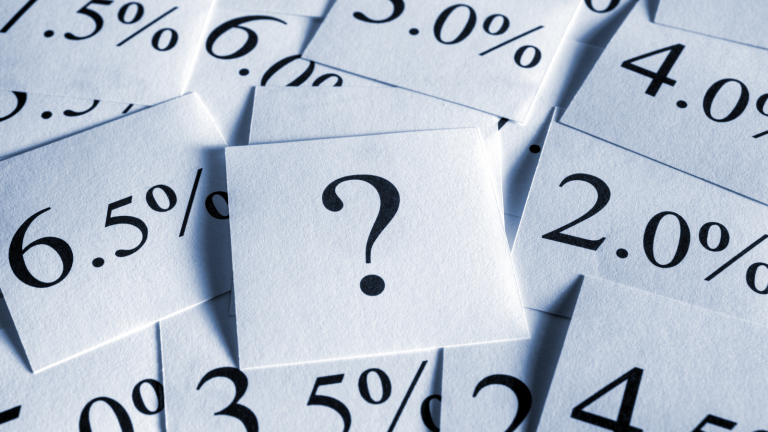As signaled earlier from policy statements and economic data, the Federal Reserve approved its third consecutive interest-rate hike of 0.75 percentage points yesterday, according to the Wall Street Journal. Inherently, though, higher interest rates increase the cost of borrowing, thereby disincentivizing business growth. In turn, the slowdown may yield a recession. Unsurprisingly, many market observers openly wondered: When will rates go down?
A top search engine query, those hoping for a respite from tightening monetary policy won’t find much relief from official sources. Per the WSJ, Fed officials unanimously voted to lift the benchmark federal funds rate to a range between 3% and 3.25%. The federal funds rate hasn’t been this high since 2008.
“Nearly all of them expect to raise rates to between 4% and 4.5% by the end of this year,” according to the WSJ report, citing new projections released earlier this week. So those asking when will rates go down may have to wait a while.
Facing Harsh Realities
In August, Fed chair Jerome Powell delivered his monetary policy speech at the annual economic symposium at Jackson Hole, Wyoming. During his statement, Powell acknowledged that households and businesses may incur “some pain” as the central bank tackles inflation. However, he also mentioned that not addressing the matter may yield long-term consequences.
Further, economic data may have forced the Fed’s hands. In August, the consumer price index (CPI) revealed that inflation came in hotter than expected. Thus, the stubbornly persistent rise in prices translated into the central bank requiring aggressive measures.
“I think the message will be largely the same as Jackson Hole,” said Michael Gapen, chief U.S. economist at Bank of America, prior to the Fed’s rate hike announcement. “It will be about getting policy restrictive, getting it there for a period of time with the overarching goal being price stability.”
But When Will Rates Go Down?
Still, with central banks guiding monetary policies based on current paradigms, it’s reasonable to ask when will rates go down. At some point, the Fed will likely reach its inflation target, which may then usher in a more accommodative strategy.
Investment resource and research firm Morningstar expects the Fed will pivot to easing monetary policy in 2023, with inflation falling back to its 2% target. Should this framework materialize, “the need to shore up economic growth becomes a top concern.”
Indeed, Morningstar expects “a year-end 2023 federal-funds rate of 1.75%, compared with 3.25% for the consensus.” Its 2026 and long-run projection “for the fed-funds rate and 10-year Treasury yield are 1.75% and 2.75%, respectively.”
As for the broader economy, Morningstar expects “GDP growth will bounce back starting in 2024 as the Fed pivots to easing.” Moreover, global supply chain normalization “should facilitate an acceleration in growth without inflation becoming a concern again.”
On the date of publication, Josh Enomoto did not have (either directly or indirectly) any positions in the securities mentioned in this article. The opinions expressed in this article are those of the writer, subject to the InvestorPlace.com Publishing Guidelines.

